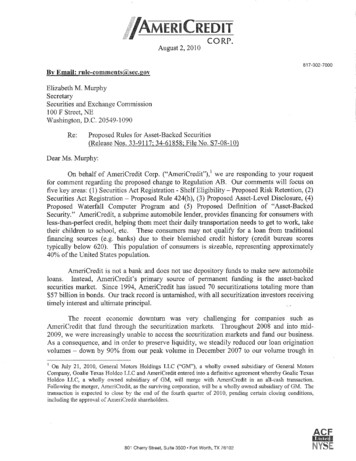
Transcription
MERICREDITAugust 2, 2010CORP.817-302-7000By Email: rule-comments(w,sec.govElizabeth M. MurphySecretarySecurities and Exchange Commission100 F Street, NEWashington, D.C. 20549-1090Re:Proposed Rules for Asset-Backed Securities(Release Nos. 33-9117; 34-61858; File No. S7-08-l0)Dear Ms. Murphy:On behalf of AmeriCredit Corp. ("AmeriCredit"), I we are responding to your requestfor comment regarding the proposed change to Regulation AB. Our comments will focus onfive key areas: (l) Securities Act Registration - Shelf Eligibility - Proposed Risk Retention, (2)Securities Act Registration - Proposed Rule 424(h), (3) Proposed Asset-Level Disclosure, (4)Proposed Waterfall Computer Program and (5) Proposed Definition of "Asset-BackedSecurity." AmeriCredit, a subprime automobile lender, provides financing for consumers withless-than-perfect credit, helping them meet their daily transportation needs to get to work, taketheir children to school, etc. These consumers may not qualify for a loan from traditionalfinancing sources (e.g. banks) due to their blemished credit history (credit bureau scorestypically below 620). This population of consumers is sizeable, representing approximately40% of the United States population.AmeriCredit is not a baule and does not use depository funds to make new automobileloans. Instead, AmeriCredit's primary source of permanent funding is the asset-backedsecurities market. Since 1994, AmeriCredit has issued 70 securitizations totaling more than 57 billion in bonds. Our track record is untarnished, with all securitization investors receivingtimely interest and ultimate principal.The recent economic downturn was very challenging for companies such asAmeriCredit that fund through the securitization markets. Throughout 2008 and into mid 2009, we were increasingly unable to access the securitization markets and fund our business.As a consequence, and in order to preserve liquidity, we steadily reduced our loan originationvolumes - down by 90% from our peak volume in December 2007 to our volume trough in1 On July 21, 2010, General Motors Roldings LLC ("GM"), a wholly owned subsidiary of General MotorsCompany, Goalie Texas Roldeo LLC and AmeriCredit entered into a definitive agreement whereby Goalie TexasRoldeo LLC, a wholly owned subsidiary of GM, will merge with AmeriCredit iu an all-cash transaction.Following the merger, AmeriCredit, as the surviving corporation, will be a wholly owned subsidiary of GM. Thetransaction is expected to close by the end of the fourth quarter of 2010, pending certain closing conditions,including the approval of AmeriCredit shareholders.801 Cherry Street, Suite 3500 Fort Worth, TX 76102
June 2009 - and undertook significant and painful headcount reductions. Notably,AmeriCredit did not receive any governmental assistance or "bailout" in order to make itthrough the crisis, nor did we find it necessary to raise capital or completely shut down andliquidate our business.We merely needed a normal (or quasi-normal) functioningsecuritization market in order to stay in business and start growing automobile loan originationvolumes again, which we did beginning in the second half of 2009. The viability ofAmeriCredit is inextricably intertwined with an effective and efficient securitization market,and we are extremely protective of our access to that market and focused on transparency,transaction performance and investor relationships. We don't have, nor do we want or expect,a government safety net.AmeriCredit is a member of the American Securitization Forum ("ASF"), which hassubmitted a comment letter to the Securities and Exchange Commission (the "Commission"),and is also a participant with other automobile finance companies submitting the Vehicle ABSSponsors comment letter. We endorse the positions in both of these comment letters that relateto issuers generally and auto finance issuers more specifically. The details that follow in thisletter emphasize specific concerns of AmeriCredit.1.SECURITIES ACT REGISTRATION - SHELF ELIGIBILITY - PROPOSED RISKRETENTIONAmeriCredit's Securitization Program - a Model (or Subprime Automobile SecuritizationsWe agree with the Commission that issuers and originators should have "skin in thegame." In fact, as originator, servicer, sponsor and residual interest holder (first-loss holder)/our interests are exactly aligned with investors. In our securitization program, we typicallyissue bonds from triple-A down to triple-B. The amount of credit enhancement provided byour reserve account and overcollateralization is designed to absorb a multiple of expectedlosses on the securitized pool of automobile loans. Only after a pre-determined targeted creditenhancement amount is met will the residual interest holder (AmeriCredit) begin to receive anycash distributions from the securitization (which does not occur until several months after thesecuritization has closed). Furthermore, a substantial portion of the capital in our transactionsdoes not come back to us until investors are fully paid.AmeriCredit is (i) originator of the underlying automobile loans, (ii) servicer, (iii)securitization sponsor and (iv) residual interest holder. Because we underwrite and service allof the automobile loans we securitize, and we retain a large ongoing economic risk in oursecuritization transactions, AmeriCredit is fully incentivized to ensure quality originations andservicing, as well as structure securitization transactions that protect investors - in our view,exact aligmnent with investors' interests. The following illustrates the performance of2AmeriCredit Financial Services, Inc" a wholly owned subsidiary of AmeriCredit, is the originator, servicer andsponsor. AFS SenSub Corp., a special purpose entity and wholly owned subsidiary of ArneriCredit FinancialServices, Inc., is the sponsor and residual interest holder in our securitizations.2
AmeriCredit's securitizations and the significant ownership that AmeriCredit has with respectto its securitizations: Since our first transaction in 1994, no investors in our 70 securitizations havelost money due to the credit perfo ance of the underlying pool or the lack ordepletion of credit enhancement, and all payments of interest and principal havebeen made as agreed in a timely maimer.AmeriCredit originates all of the automobile loans in its portfolio with the intentto hold them on its balance sheet. All of our securitizations are structured as"on balance sheet" financing transactions, not transactions structured to achievecapital relief or other balance sheet management objectives.The automobile loans we originate are not sold to "aggregators" who latersecuritize them, nor are any of the automobile loans we securitize purchasedfrom "aggregators." AmeriCredit underwrites each automobile loan one at atime. Whether we securitize an automobile loan or not, AmeriCredit, asservicer, continues to maintain contact with each of our consumer customers forthe life of the loan.AmeriCredit does not retain the higher quality automobile loans and onlyinclude the lower quality loans in securitizations - we include all of eligibleautomobile loans in our securitization pools. Also, the offering and transactiondocmnents for AmeriCredit's securitizations mandate that no selectionprocedures adverse to investors are to be utilized in the selection of theautomobile loans for our securitizations.AmeriCredit retains a significant first-loss position in its securitizationtransactions in an amount that meets or exceeds the proposed 5% risk retentionrequirement. Currently, our risk retention is comprised of a reserve fund equalto 2% of the original securitized pool (which fund does not decline or amortizeas the pool alllortizes), and target overcollateralization equal to or greater than15% of the securitized pool, depending upon the structure of the transaction andthe alllount of "excess spread" in the transaction (e.g., the difference betweenthe interest rate on the underlying pool of loans and the interest rate on thesecuritization bonds).We believe that, under circmnstances where the originator is the servicer, sponsor andresidual interest holder, the optimal retention scheme for automobile loan securitization shouldfocus on that portion of the capital structure that absorbs the first loss. As discussed above,AmeriCredit originates and services all of its automobile loans, securitizes all of its eligibleautomobile loans and retains substantial skin in the game. As holder of the residual interest orfirst-loss position and as recipient of "bottom of the waterfall" payments, the only wayAmeriCredit makes money on its securitizations is when the securitization pools perfo . Thisclearly incentivizes AmeriCredit to conduct intensive loan underwriting and undertake "best inclass" servicing of its automobile loans which, in turn, protects investors from losses.3
In sum, the current model for subprime automobile loan secunlJzation, ideallyrepresented by AmeriCredit's successful and longstanding securitization program, providesproper alignment of interests between sponsors and investors. Furthennore, the risk retentionproposed by the Commission for Fonn SF-3 eligibility - requiring a vertical slice of alltranches issued - creates a financial burden that will negatively impact the amount and cost ofcredit available to consumers, without an offsetting benefit to securitization investors.Current Automobile Securitization Structures Protect InvestorsAutomobile securitization issuance since 2000 is approximately 750 billion - and, toour knowledge, timely interest and ultimate principal repayment has occurred in every singleautomobile securitization transaction over this time period. Further, in none of theseautomobile securitizations has the securitization sponsor created or retained a vertical slice(some issuers may have retained one or more tranches of bonds or held some of the bonds of aparticular tranche due to slack market demand, but a purposeful vertical slice has never been astructural element of automobile securitizations). This illustrates that current securitizationstructures providing for a "horizontal slice" have protected investors and aligned the interestsof investors and issuers.In contrast to other financing industries (e.g., subprime mortgage), subprimeautomobile securitization structures withstood the test of time, in large part, because theautomobile loan finance industry has never experienced irrational growth buoyed byspeculation (consumer borrowers don't "speculate" on automobile values), unsoundunderwriting standards (there is no such thing as "no-doc" automobile loans) or exotic productdevelopment (adjustable-rate or interest-only automobile loans don't exist). Automobilefinancing products are simple interest and fully amortizing loans, borrowers are underwrittenbased on their ability and willingness to repay the loan in full and the collateral is known todepreciate. The securitizations that fmanced these "plain vanilla" automobile loans did notimplode or contribute to the recent economic downturn. The auto ABS market was aninnocent bystander of the credit perfonnance of other asset classes, primarily mortgage andmortgage related, which sent secondary markets and ABS pricing into a tailspin.The securitization markets became frozen in late 2008 which, in turn, staunched theflow of credit to consumer borrowers. The Tenn Asset-Backed Securities Loan Facility("TALF'') program introduced by the Federal Reserve Banle of New York and the U.S.Treasury in early 2009 helped reopen the securitization markets and resume the flow ofconsumer credit. Subsequently, the securitization markets have rebounded, but have yet tofully recover to their pre-cycle levels. The requirement of a 5% vertical risk retention proposed as a "one size fits all" without providing for alternatives for different assets classes orrisk profiles - will be harmful to the ongoing recovery of the securitization markets, againhanning consumer access to credit. This is a classic "two steps back" after TALF helped themarkets and consumers take "one step forward."4
In short, the Commission's risk retention proposal, at least as applied to automobilesecuritizers generally, and to AmeriCredit specifically, fails to balance the harm to consumersthat will occur from more costly and less available automobile credit, against a (nonexistent)risk of harm to securitization investors that is not borne out by the history of automobilesecuritizations.Proposed Risk Retention Harms ConsumersThe current proposed risk retention will negatively impact the cost and availability ofconsumer credit. If implemented, AmeriCredit and other automobile lenders will likely reduceautomobile loan originations and/or pass along the increased securitization costs to customers.In turn, consumers may be faced with fewer available financing opportunities and/or highermonthly payments associated with their automobile loans. A reduction in the availability andaffordability of credit will likely prevent a large number of Americans from purchasingautomobiles.AmeriCredit would need to increase pricing by approximately 165 basis points (e.g., anincrease in APR from 15% to 16.5%) to offset the impact of holding a 5% vertical slice on topof the substantial horizontal slice we already hold - this APR increase would cause a monthlypayment to increase by approximately 17, or 1,179 over our average loan term of 69 months.Given that our subprime consumers, as a general matter, are already financially stressed,increasing borrowing costs on new automobile loans is particularly detrimental. Moreover, anincrease in required monthly payments will likely cause more credit-challenged consumers tofail to qualify for a loan in the first place.In the event that AmeriCredit is unable to recoup its increased securitization fundingcosts through higher rates to consumers, or is unable to commit sufficient capital to supportholding a 5% vertical slice in addition to the horizontal slice we already hold, our originationlevels could be negatively impacted by up to 20% per year (a 400 million reduction in loanoriginations over the next year). We believe that similar percentage reductions may beconsidered by other large automobile lenders. This will have a chilling effect on purchases ofautomobiles by U.S. consumers, ultimately hurting automobile manufacturers, automobiledealers and the U.S. economy.We are aware that the proposed risk retention is only required if issuers plan to utilize ashelf registration statement on the proposed Form SF-3. The alternative - using proposed FormSF-l - would also have a chilling effect on consumer lending. Since securitization is ourprimary source of permanent financing, timely, efficient and effective access to thesecuritization market is the key determinant to the volume of automobile loans we originate.Disrupting or delaying our ability to access the market regularly (we securitize up to six timesper year) would require us to reduce automobile loan volume and/or utilize, to the extentavailable, more expensive interim warehouse financing, which will likewise have a negativeimpact on consumers access to and cost of credit.5
AmeriCredit's Risk Retention ProposalFor the reasons set forth above, the revisions to Regulation AB should provide that, incircumstances where the originator is the servicer, sponsor and residual interest holder, ameaningful horizontal slice (first-loss position) is a sufjicient method (in fact, it is a superiormethod) to meet the requirements for risk retention for purposes of FOlm SF-3 shelf eligibility.If desired, the Commission could require additional disclosure in the offering documentsregarding the manner in which a retained horizontal interest is calculated so that investors canassess the nature and sufficiency of the retained interest.II.SECURITIES ACT REGISTRATION - PROPOSED RULE 424(h)The Five-Business Dav Waiting Period is Too Long and UnnecessarvAmeriCredit believes that a mandatory waiting period of five business days nnderproposed Rule 424(h) is too long and unnecessarily exposes well established securitizers, likeAmeriCredit, to market and execution risk for securitization transactions, without providing ameaningful benefit to securitization investors.A five-day waiting period is more consistent with the time delays associated with aninitial public offering of equity. But securitization offerings, particularly those by well-lmownand well-seasoned issuers, are not comparable to equity IPOs. IPOs are generally undertakenby smaller and/or younger companies with limited investor familiarity. By contrast, the bondsissued by AmeriCredit in a securitization are issued by a well-lmown, well-seasoned issuerand, of course, are fully secured by the underlying assets. Proposed Rule 424(h) leads to theperverse result that WKSI-eligible AmeriCredit can issue equity or unsecured debt - relativelyrisky forms of capital- without any required waiting period, but can only raise secured debt generally considered to be relatively less risky due to the collateral underlying the security only after enduring a prescribed waiting period.AmeriCredit is a well known, well-seasoned issuer in the securitization market havingexecuted 70 securitizations -- our securitization structures have remained largely unchangedsince our initial securitization transaction in 1994. In addition, AmeriCredit's structures aresimple when compared to other asset classes (e.g., mortgage loans, collateralized debtobligations, etc.). Our securitizations have fairly standard tranches and relative tranche sizing,similar transaction participants (AmeriCredit and related special purpose entities, trustees,rating agencies, etc.), similar collateral pools (homogeneous automobile loans), andstandardized transaction documentation. Furthermore, unlike an unknown company that isplanning an initial public offering, securitization investors are familiar with the wayAmeriCredit runs its business including underwriting and servicing criteria; investors are alsovery familiar with the static pool information detailing AmeriCredit's historical securitizationperformance.6
We also believe that a mandatory five-business day waiting period after materialchanges to the preliminary prospectus is too long. In certain instances, no waiting periodshould be required such as when "upsizing" a transaction due to strong investor demand. Inother instances, a modest waiting period not to exceed one day may be appropriate. Therefore,AmeriCredit agrees with the ASF and Vehicle ABS Sponsors comment letters to theCommission that only material changes that significantly affect the asset pool, the cashflows orthe transaction structure should be subject to a mandatory one-business day waiting period.AmeriCredit's Proposal for Waiting PeriodsFor the foregoing reasons, the revisions to Regulation AB should provide investors with(i) a more appropriate waiting period not to exceed two business days to analyze thepreliminary prospectus prior to the first sale of securities and, (ii) one business day for amaterial change to the preliminary prospectus. AmeriCredit believes that this approach wouldstrike the right balance between the needs of investors and the interests of issuers, and wouldbest serve the efficient and effective functioning of the securitization markets.III.PROPOSED ASSET-LEVEL DISCLOSUREWe are strong proponents of transparency and an industry leader in the breadth anddepth of information we disclose on our web site and through investor outreach. We were afirst mover in expanding the amount of stratified information included in offering documents(e.g., LTV disclosure, vehicle manufacturer and vehicle segment).Asset-level information is not necessarily appropriate for all types of asset-backedsecurities. On average, an automobile securitization can contain 100,000 individual accounts,and requiring asset-level information would r
AmeriCredit makes money on its securitizations is when the securitization pools perfo . This clearly incentivizes AmeriCredit to conduct intensive loan underwriting and undertake "best in class" servicing of its automobile
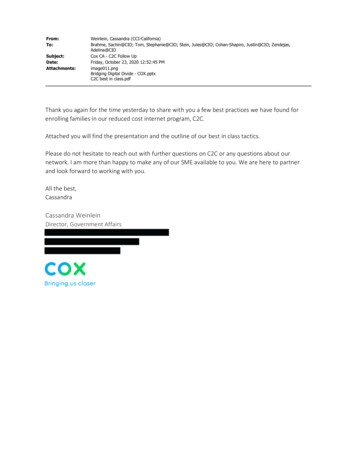


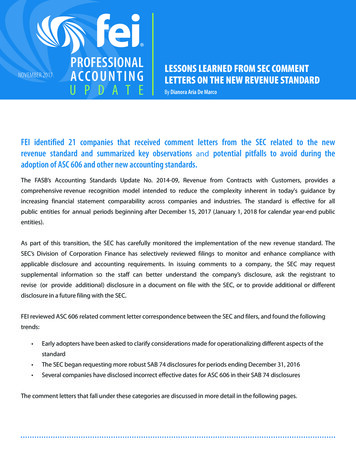
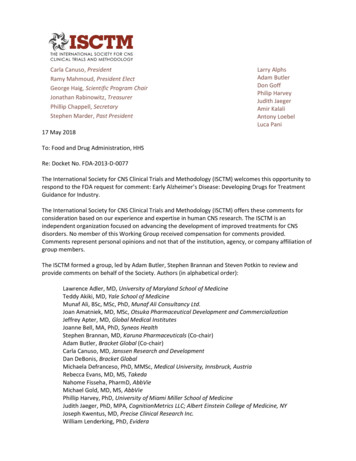
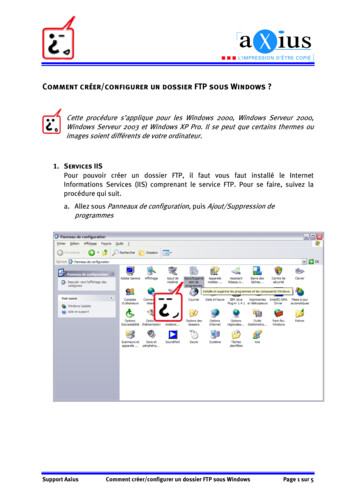
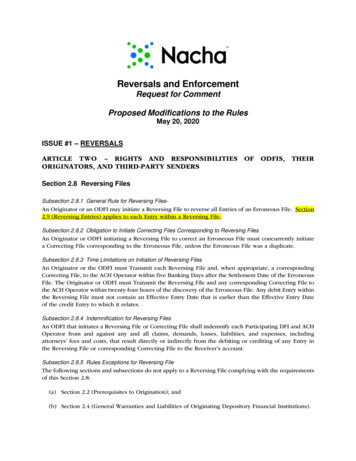
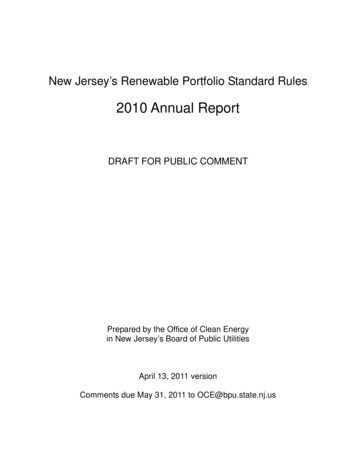
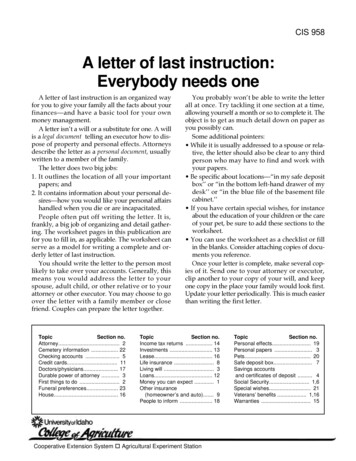
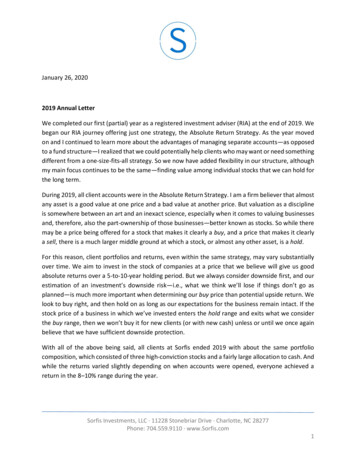

![Letter from Birmingham Jail (1963) [Abridged]](/img/2/1963-mlk-letter-abridged.jpg)